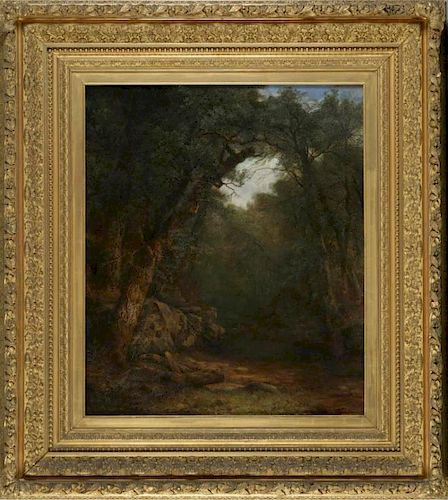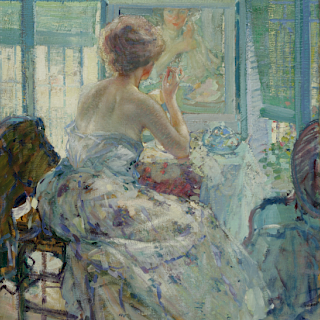Asher Brown Durand (American, 1796-1886)
Lot 4
About Seller
Keno Auctions
127 East 69th Street
New York, NY 10021
United States
Keno Auctions is renowned for our expertise in fine and decorative arts. With more than 30 years experience, founder Leigh Keno has established a brilliant team of experts specializing in fine art, furniture, decorative arts and jewelry.
Estimate:
$15,000 - $30,000
Absentee vs Live bid
Two ways to bid:
- Leave a max absentee bid and the platform will bid on your behalf up to your maximum bid during the live auction.
- Bid live during the auction and your bids will be submitted real-time to the auctioneer.
Bid Increments
| Price | Bid Increment |
|---|---|
| $0 | $25 |
| $100 | $100 |
| $2,000 | $250 |
| $5,000 | $500 |
| $30,000 | $2,500 |
| $50,000 | $5,000 |
| $100,000 | $10,000 |
| $500,000 | $10,000 |
| $1,000,000 | $10,000 |
About Auction
By Keno Auctions
Jan 31, 2016 - Feb 1, 2016
Set Reminder
2016-01-31 13:00:00
2016-02-01 13:00:00
America/New_York
Bidsquare
Bidsquare : Winter Pop-Up Auction
https://www.bidsquare.com/auctions/keno/winter-pop-up-auction-1259
Keno Auctions Leigh@kenoauctions.com
Keno Auctions Leigh@kenoauctions.com
- Lot Description
Asher Brown Durand (American, 1796-1886) Forest Glen Oil on canvas 33 ¼ x 27 ¼ inches Tentatively signed on verso, stamp on the back Estimate: $15,000-30,000 Considered one of the most influential members of the Hudson River School, Asher B. Durand endeavored to portray fresh, faithful depictions of nature through his iconic landscapes. Initially trained as an engraver, he did not commence his painting career until the early 1830s. Encouraged by prominent arts patron, Luman Reed, and fellow National Academy of Design founders, Thomas Cole and Samuel F. B. Morse, Durand abandoned engraving entirely to fully embrace painting by 1835. The influence of trips to the Adirondacks with Cole, combined with time spent in Europe studying the work of painters such as Claude Lorrain and Aelbert Cuyp, are reflected in Durand’s landscapes.1 Aiming to reveal the soul and depth of the beauty of landscape nature, Durand wanted the viewer to “look into the picture instead of on it.” By doing so, “pleasant reminiscences and grateful emotions will spring up at every step, and care and anxiety will retire far behind him.”2 In Forest Glen Durand successfully captures the essence of the American wilderness with his characteristic use of honest, exact details. 1 Huntington, Daniel. Asher B. Durand, A Memorial Address. New York: G. P. Putnam’s Sons, 1887. 2 Durand, Asher B. “Letters on Landscape Painting, Letter VI.” The Crayon Vol. 1, No. 7 (February 1855).
- Shipping Info
-
Buyer Pays Shipping Cost
-
- Buyer's Premium



 EUR
EUR CAD
CAD AUD
AUD GBP
GBP MXN
MXN HKD
HKD CNY
CNY MYR
MYR SEK
SEK SGD
SGD CHF
CHF THB
THB






